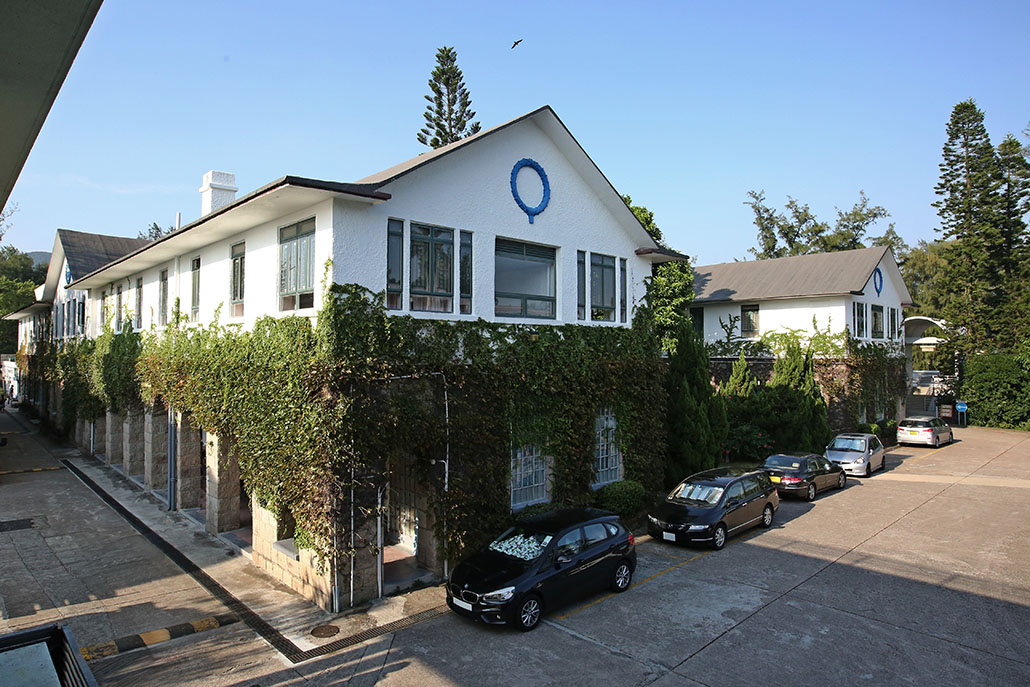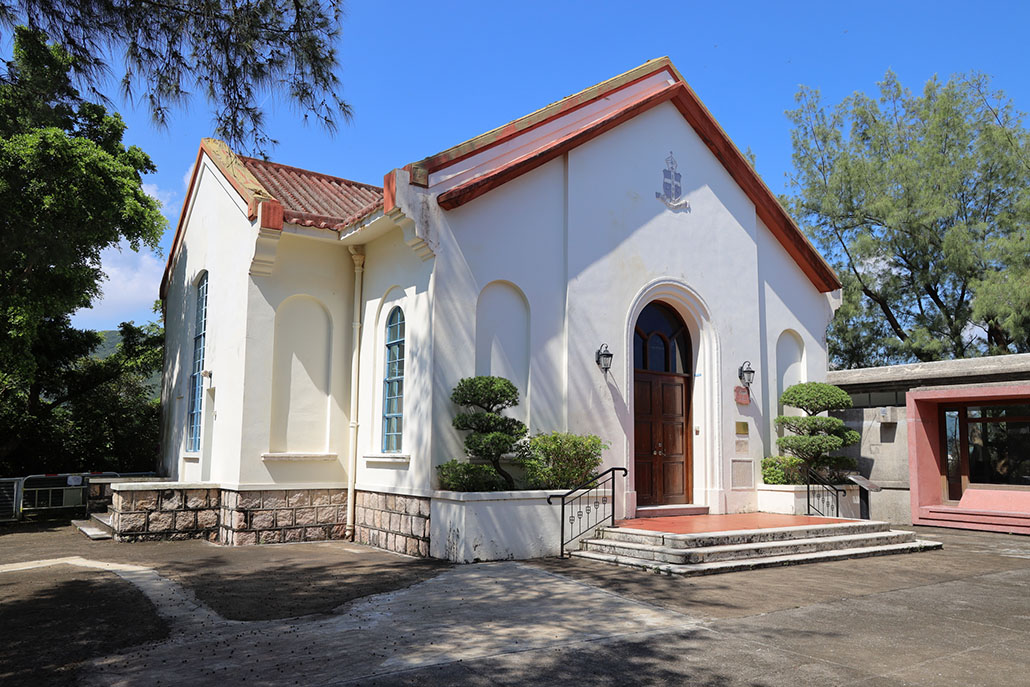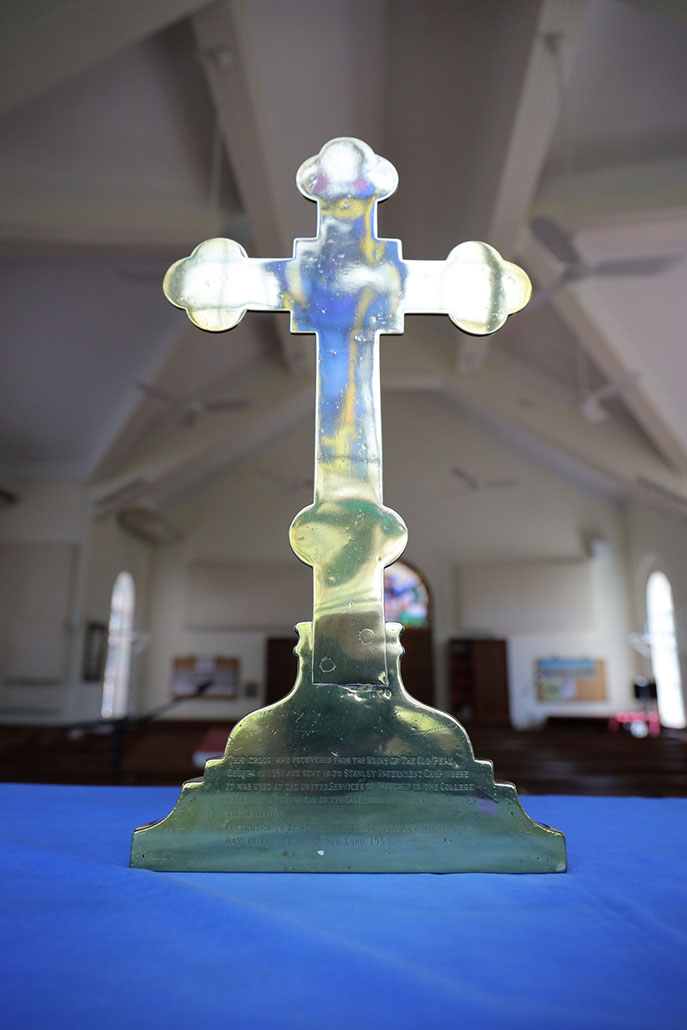School House (Declared Monument)
St Stephen's College is located at No. 22 Tung Tau Wan Road, Stanley. Founded in Western Street in 1903, it was relocated to Pok Fu Lam in 1924 and to the present site in Stanley in 1930. Its School House was inaugurated on 25 March 1930. It was the first building completed in the college and was the oldest boarding school building in Hong Kong.
On 8 December 1941, Japanese forces invaded Hong Kong, and the 18-day Battle of Hong Kong began. Since Wong Nai Chung and the Stanley peninsula were important defence lines for Hong Kong defence forces, St Stephen's College was a strategic location in the Hong Kong's resistance campaign. The School House of St Stephen's College was requisitioned by the British army and converted into an emergency military hospital, and the staff members and students of the college helped in the hospital. The spirit of mutual assistance among the teachers and students of the college during the Japanese Occupation was deeply moving. Tam Cheung-huen, the college's Head of Chinese Studies, sacrificed his life protecting the students who remained in the campus. He is honoured with a memorial plaque inside School House.
The Hong Kong defence forces eventually succumbed to the Japanese army. At the dawn of Christmas Day, 1941, Japanese troops occupied St Stephen's College. They broke into School House and committed the “St Stephen’s College Massacre”. In the afternoon, Hong Kong Governor Sir Mark Young surrendered to the Japanese troops. That day was subsequently referred to as “Black Christmas”.
The Fall of Hong Kong lifted the curtain on three years and eight months of the Japanese Occupation. St Stephen's College, along with the nearby Stanley Prison Warders’ Quarters, were used as Stanley Internment Camp. Some 3,000 non-Chinese civilians from the Allies and a small number of prisoners of war were held in the camp, including 1,000 in St Stephen's College. Among the detainees in the college, about 370 were held in School House. Owing to food shortages, most of the detainees were skin and bones by the end of the war. They suffered from malnutrition and lived in very difficult condition.
St Stephen's College remains in operation today. It has nurtured many outstanding Chinese individuals over the years.
St Stephen's College Heritage Trail Docent Tour is open to public on Saturdays and Sundays, subject to the school activities. Please visit the official website for details. Interested parties are welcome to register for the tour via the school application form: https://www.ssc.edu.hk/links/ssctrail/eng/docent.html.
For details, please visit the official website of St Stephen's College: https://www.ssc.edu.hk.
Address:
22 Tung Tau Wan Road, Stanley, Hong Kong.
Enquiry Hotline:
(852) 2813 0360
St Stephen's Chapel (Grade 3 Historic Building)
Inaugurated in 1950, St Stephen’s Chapel of St Stephen's College was built on the highest point of the campus to honour those killed in the internment camp during the Japanese Occupation (1941—1945) and other victims in the World War II.
The chapel was built to a cruciform plan, with its plain-rendered walls raised off a granite plinth. The architectural details show how the school remembered the victims of World War II. The stained glass on the arched door features emaciated prisoners of war and children praying in the centre. Above them are a pair of doves in flight. This picture reflects the harsh days in the internment camp and shows that the victims overcame the hardships of the Japanese Occupation with great virtues of faith, hope and love. Two textual records originally engraved on the cell walls by the detainees documenting the hard times in Stanley Internment Camp were reproduced on the stained glass. The first is a calendar drawn by D.W. Waterton. Using one oblique stroke to represent each day, he recorded his time in Stanley Internment Camp, from the start of his detention on 4 July 1943 to the day of his execution. The second record shows the name and date of the execution of some of the prisoners of war. According to the college, the original textual records were exhibited in Imperial War Museum in Britain. They were reproduced on the stained glass because of their historical significance.
A plaque in the chapel commemorates some of the soldiers who gave their lives during World War II. Among them were victims of the sinking of Lisbon Maru, a ship carrying prisoners of war from Hong Kong to Japan in 1942.
Today, students and staff members of the college pray and attend services in the chapel. Memorial services are held regularly to honour the teachers who sacrificed their lives in the Japanese Occupation and were buried in Stanley Military Cemetery near the college. These include Professor Tam Cheung-huen, head of Chinese Studies; Mr John Gaunt, mathematics teacher; and Mrs Kathleen Louisa Martin, wife of the warden.
In 2008, the college set up a heritage trail linking its historic buildings, such as the School House and chapel. The trail commemorates victims of World War II, while illustrating the school’s history to the public and bearing testimony to the close connection between St Stephen's College and the history of Hong Kong.
St Stephen's College Heritage Trail Docent Tour is open to public on Saturdays and Sundays, subject to the school activities. Please visit the official website for details. Interested parties are welcome to register for the tour via the school application form: https://www.ssc.edu.hk/links/ssctrail/eng/docent.html.
For details, please visit the official website of St Stephen's College: https://www.ssc.edu.hk.
Address:
22 Tung Tau Wan Road, Stanley, Hong Kong.
Enquiry Hotline:
(852) 2813 0360










